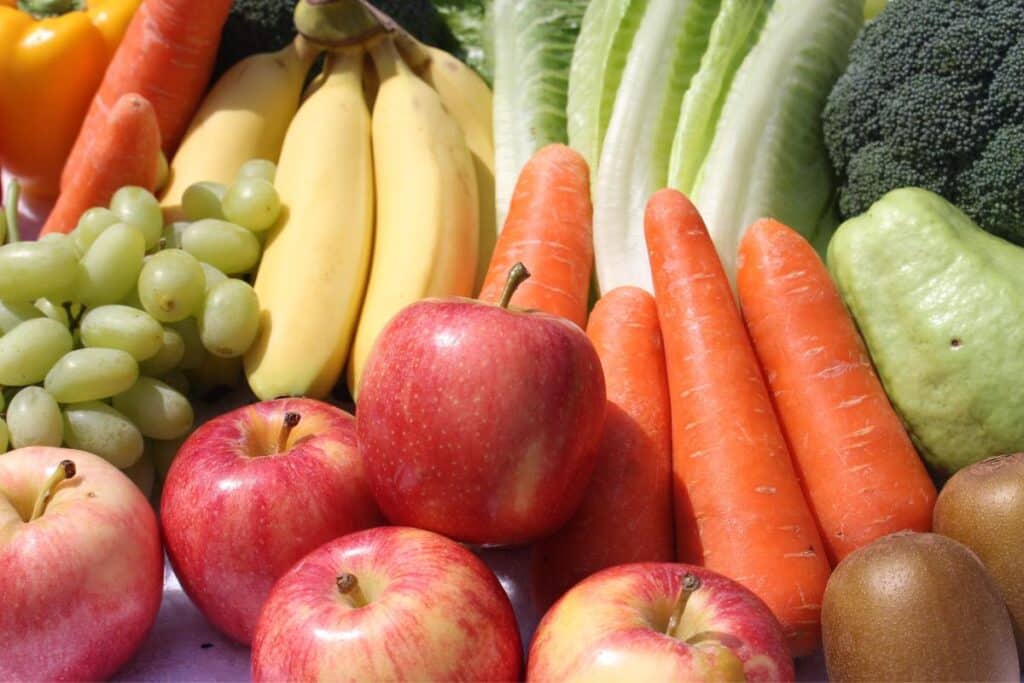For men looking to enhance their health and wellbeing, understanding how fruits and vegetables are classified can be pivotal. These classifications help men make informed choices about the variety and balance of their nutrient intake. Here’s a breakdown of how fruits and vegetables are categorized and why each group is important for men’s health.
Types of Fruits and Vegetables
Fruits
Fruits are typically sweet or sour in taste and are often enjoyed as snacks, juices, or desserts. They are botanically classified based on their structure and the way they develop from the plant.
1. Simple Fruits: Develop from a single ovary and can be either fleshy, like peaches and cherries, or dry, like nuts.
2. Aggregate Fruits: Form from a single flower with multiple ovaries, such as strawberries and raspberries.
3. Multiple Fruits: Develop from a cluster of flowers, like pineapples and figs.
4. Berries: A sub-category of simple fruits where the entire ovary wall becomes fleshy, such as tomatoes, grapes, and bananas.
5. Citrus Fruits: Including oranges, lemons, and grapefruits, known for their juicy segments.
Vegetables
Vegetables are classified based on the part of the plant from which they come:
- Leafy Greens: Such as spinach, kale, and lettuce.
- Cruciferous Vegetables: Including broccoli, cauliflower, and Brussels sprouts.
- Root Vegetables: Like carrots, beets, and potatoes.
- Squash and Gourds: Such as pumpkins, cucumbers, and zucchini.
- Alliums: Including onions, garlic, and leeks.
Why Classification Matters
The classification of fruits and vegetables can guide men toward a diet that supports muscle growth, weight management, and reduces the risk of chronic diseases. Knowing the differences can also aid in meal planning and ensure a variety of nutrients are consumed.
How Are Fruits and Vegetables Classified?
The major differences between fruits and vegetables are based on botanical definitions as well as culinary usage:
Botanical Differences:
1. Origin:
– Fruit: In botanical terms, a fruit develops from the flower of a plant and contains seeds. Fruits are the mature ovary or ovaries of one or more flowers. They are the means by which these plants disseminate seeds.
– Vegetable: A vegetable is any other part of the plant that is edible, such as roots, leaves, stems, and bulbs.
2. Structure:
– Fruit: Fruits often have a soft or fleshy part which encloses seeds. This includes apples, berries, melons, tomatoes, and peppers.
– Vegetable: Vegetables consist of a wide variety of plant parts, including leaves (lettuce), stems (celery), roots (carrots), tubers (potatoes), bulbs (onions), and flowers (broccoli).
Culinary Differences:
1. Taste:
– Fruit: Fruits are often sweet or tart in flavor and are used in desserts, snacks, and juices as well as savory dishes.
– Vegetable: Vegetables have a more mild or savory taste and are often used in main dishes, sides, soups, and salads.
2. Usage:
– Fruit: Fruits are typically eaten raw or can be cooked in a variety of ways. They are often used in baking, as toppings for cereals, or as sweeteners.
– Vegetable: Vegetables are commonly cooked to make them more palatable and digestible, although many can also be eaten raw, such as in salads.
Nutritional Content:
– Fruit: They tend to be higher in sugar and calories than most vegetables and have high levels of vitamins such as vitamin C and A.
– Vegetable: Vegetables are often lower in sugar and contain a variety of nutrients. They can be rich in a wide range of vitamins, minerals, and dietary fiber, and are typically lower in calories and sugar compared to fruits.
Cultural and Regional Differences:
– The classification can also vary by cultural and regional culinary traditions. For example, tomatoes and cucumbers are botanically fruits but are commonly used as vegetables in culinary contexts.
Understanding these differences can help in making informed choices about diet and nutrition, and in appreciating the roles that both fruits and vegetables play in a balanced diet.
Importance in Men’s Health
Nutrient Density
Fruits and vegetables are high in essential vitamins and minerals while being low in calories. They provide the nutrients necessary for testosterone production, muscle repair, and energy metabolism.
Disease Prevention
Regular consumption of a variety of fruits and vegetables is associated with a reduced risk of many lifestyle-related health conditions. They provide antioxidants and phytochemicals that can protect against heart disease, diabetes, and certain cancers.
Weight Management
Fruits and vegetables have high fiber and water content, which can help men feel full longer and reduce overall calorie intake, aiding in weight management and fat loss.
Incorporating Fruits and Vegetables into a Men’s Diet
To reap the full benefits, men should aim for at least 5 servings of fruits and vegetables daily, with a focus on variety to cover all categories:
- Smoothies that include berries and leafy greens
- Salads with a mix of colorful vegetables
- Stir-fries that incorporate different types of vegetables
- Snacking on whole fruits like apples and bananas
- Grilling or roasting vegetable medleys for flavor variety
Conclusion
Classifying fruits and vegetables is more than just academic; it’s a practical approach to diversifying your diet and maximizing the health benefits. For men, a diet rich in various fruits and vegetables can enhance physical health, boost energy levels, and support longevity.
In essence, the way fruits and vegetables are classified can inform men’s dietary choices, ensuring a comprehensive intake of the nutrients needed for optimal health. By integrating a wide array of these plant-based foods into the diet, men can build a strong foundation for a healthy lifestyle.





I’m often to blogging and i really appreciate your content. The article has actually peaks my interest. I’m going to bookmark your web site and maintain checking for brand spanking new information.